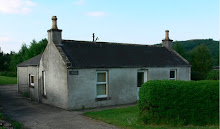 roula,
roula, can you ask nick how i would create an equation that will determine the four shortest lengths of time that could play as asynchronous loops and not repeat themselves for a hundred years?
yours, dave
Hi Roula,
Nice to hear from you. It's too bad you and Dave have to spend 3 months apart, at least you get to see him in August. Hope you are doing well.
Regarding math question, let me see if I understand what Dave is asking: He has 4 loops, lets call them L1,..,L4 and each loop plays for some give amount of time, let's say T1,..,T4. Where the amount of time each loop plays can be different, so for example T1 is not equal to T2.
Now, is he starting all of the loops at the same time? Or does asynchronous mean that they start at different times?
By not repeating, does he mean that the combined signal from L1,..,L4 never repeats for one hundred years?
Is Dave trying to minimize T1,..,T4 such that the combined signal from L1,..,L4 does not repeat for 100 years?
I don't think I understand the question, it would be helpful if Dave could give me a little more detail about the specific arrangement. I'm not sure if there are even 4 loops.
Take care, hope to hear back from you re math question. I'm intrigued.
Nicos.
hi nick,
sorry i was unclear.
there are indeed four loops. each as short as possible and repeating. they begin at the same time and the idea is to not have the four cycle back to the beginning again, for one hundred years. in other words, they will not intersect in the same way, for a century.
the piece is based on a scottish composer who wrote an avant garde piano work in the early fifties that was (for it's time) the longest unbroken single piano movement. he famously quipped that it took a year to write and an hour to perform. i'd like to invert his equation by producing a piece that takes an hour to record and a year to playback.
yours,
dave

No comments:
Post a Comment